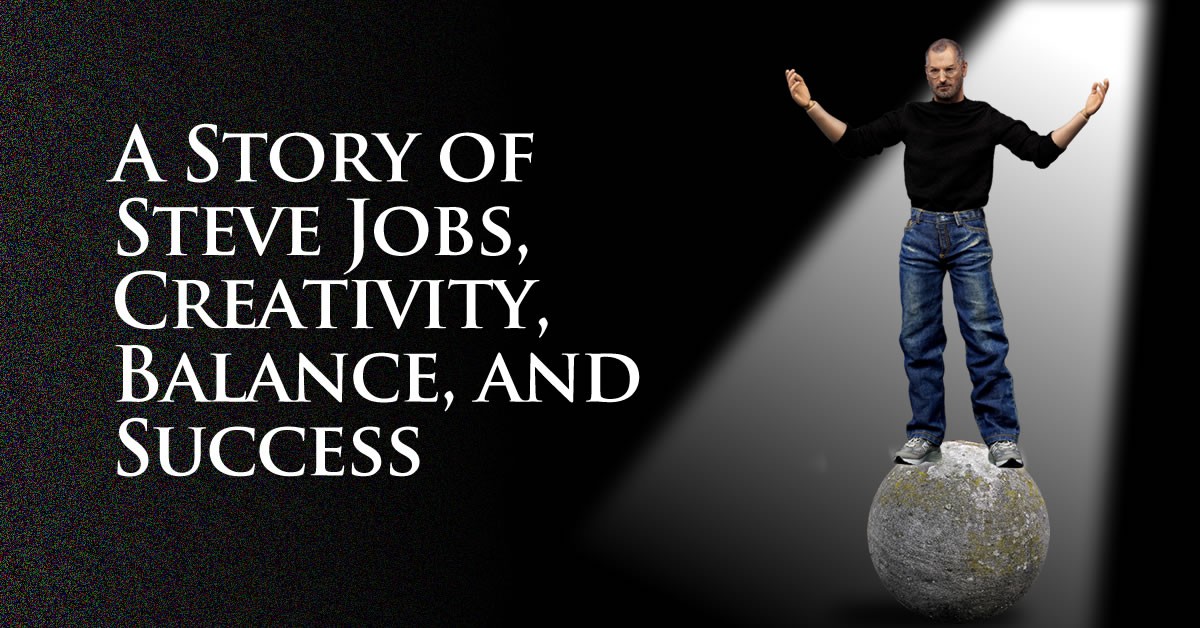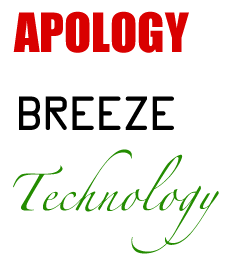A Story of Steve Jobs, Creativity, Balance, and Success

“People from technology don’t understand the creative process … companies go through to make their products, and they don’t appreciate how hard it is. And the creative companies don’t appreciate how creative technology is; they think it’s just something you buy. And so there is a gulf of understanding between the two of them.”
— Steve Jobs in The Wall Street Journal
Balance in leadership and culture ensures that we all feel listened to, understood, and represented—a deep and important human need—but despite great strides, the corporate world has largely failed to acknowledge a critical balancing element.
Healthy enterprises are led and staffed more-or-less equally by men and women.
Racial and cultural diversity is likewise a form of balance that betters society and business.
And though it breaks down when they serve outside interests, extreme principles, (or themselves), a healthy democracy is led more or less equally by liberal and conservative perspectives.
But with rare exceptions, technological innovation is offered by engineering-centric companies who think of design as an afterthought. This lack of balance is easy to find.
Have you ever tried to make sense of the Google Help files? They are decorated with cute illustrations of helpful people and they’re logically organized, but they’re not well-designed. The notion that { good design = functionality + decoration } is tragically flawed.
And if you think the Google help files are cryptic, try setting up Amazon Web Services to communicate with your email list software. I’ve been locked out of my account for months and even their phone support has been unable to help me navigate the sea of acronyms and technological arcana.
If Steve Jobs were still around so we could ask him for a one-word justification for Apple’s success, that word would undoubtedly be “design.”
But if it isn’t “decoration,” what is design?
The meaning lives in the word itself.
The prefix de means to break down, take apart or undo. Consider words like destruct, deteriorate, decontaminate, and delete.
So what does it mean to de•sign?
We can work with Webster’s clunky dictionary definitions and still get where we want to go, but let’s approach from a more intuitive direction.
A sign is an image with a meaning attached to it.
🛑 means stop.
💡 represents an idea.
👍 stands for approval.
Design goes deeper than iconography. Though a design may or may not include text, consider how better typeface selection would improve the following examples:

Changing the typefaces will not change the information—the data—but it will change the level of meaning and engagement. Better font and color selections will build stronger relationships with those who we want to feel the sincerity of our apology, the freshness of the breeze, and the power of our technology.
Even word choice is design. “Put,” “use,” and “develop” are correct and functional, but people respond emotionally to “heart words” like “explore,” “create,” and “discover.”
Therefore…
A de•signer is a person who brokers relationships between images and their meanings.
“In most people’s vocabularies, design means veneer. It’s interior decorating. It’s the fabric of the curtains or the sofa. But to me, nothing could be further from the meaning of design. Design is the fundamental soul of a human-made creation that ends up expressing itself in successive outer layers of the product or service.”
—Steve Jobs, Fortune Magazine
What does this have to do with you and your business? Let’s return to the Golden Rule of Storytelling and the maxim that follows from it:
Stories are always about people.
If you’re talking about prices, processes, ingredients, or data, you’re not talking about people.
If you’re not talking about people, you’re not telling stories.
If you’re not telling stories, you’re not connecting.
And if you’re not connecting, you’re not selling.
For a functional tool or message to be successful, it must inspire a meaningful interaction between itself and its user. The same data can look dull, intimidating, uninspiring, and boring on one page and exciting, engaging, and easy-to-digest on another.
The value does not live in the data; the value lives in the way design inspires its consumer to engage, understand, interact, and act on the meaning of the data.
Design without meaning to convey is shallow—decoration. It’s yet another logo with a globe or swoosh in it, yet another dream-catcher tattoo, or another strip mall sign with plastic slide-in letters on it.
Good information wrapped in poor design is inspiration that never reaches its potential. It’s the web form that produces important answers but never get used because it looks like a gray box with buttons and text fields in it.
And though the above examples depict extremes, true design purgatory is found in the commonplace, shoddy, good-enough, almost-but-not-quite-there, unremarkable messaging generated by uninspired, underfunded, and aesthetically unaware folks who believe DIY design will save them money.
Cheap design is the most expensive money you’ll ever save!
Capable designers—not the crowdsourced $10/hour variety whose bootlegged copies of Photoshop empower them to assume their title—but trained designers who understand the differences between Garamond and Times New Roman, know how to use white space, and have studied the differences between Grunge, Constructivism, and the Bauhaus—are aesthetic decision-makers who make your information meaningful.
And this brings us back to balance.
Is design a commodity you outsource when you need it?
Is progress toward launch a battle between the finance department and the engineers in which the creative department (if you even have one) has little input?
Smart leaders, especially in the technology space, may not be inclined to intuitively understand the value and importance of design. But more often than not, our clients and end users don’t think the way we do or see the world through the same eyes.
The best technology companies make tools that people who hate technology love.
The best design companies use technology as a vehicle for conveying meaning and value.
Want to get ahead of your “gorilla” competitors?
“We made the buttons on the screen look so good you’ll want to lick them.”
— Steve Jobs, Fortune Magazine
Balance out your team with experienced creative professionals, wrap everything you do—from your email signature to your e-newsletter to the reports generated by your software—in excellent design, and let them wonder how you got ahead of them on a fraction of their budget.
And once they understand your story, don’t art-direct them. You don’t even have to understand or like what they do any more than they understand or like that clever recursive function in your C++ code that makes your technology sing. Trust your story to the storytellers and you’ll win.
In fact, it’s easy to argue that balance between left-and right-brained stakeholders is, in itself, a form of good and effective design.


